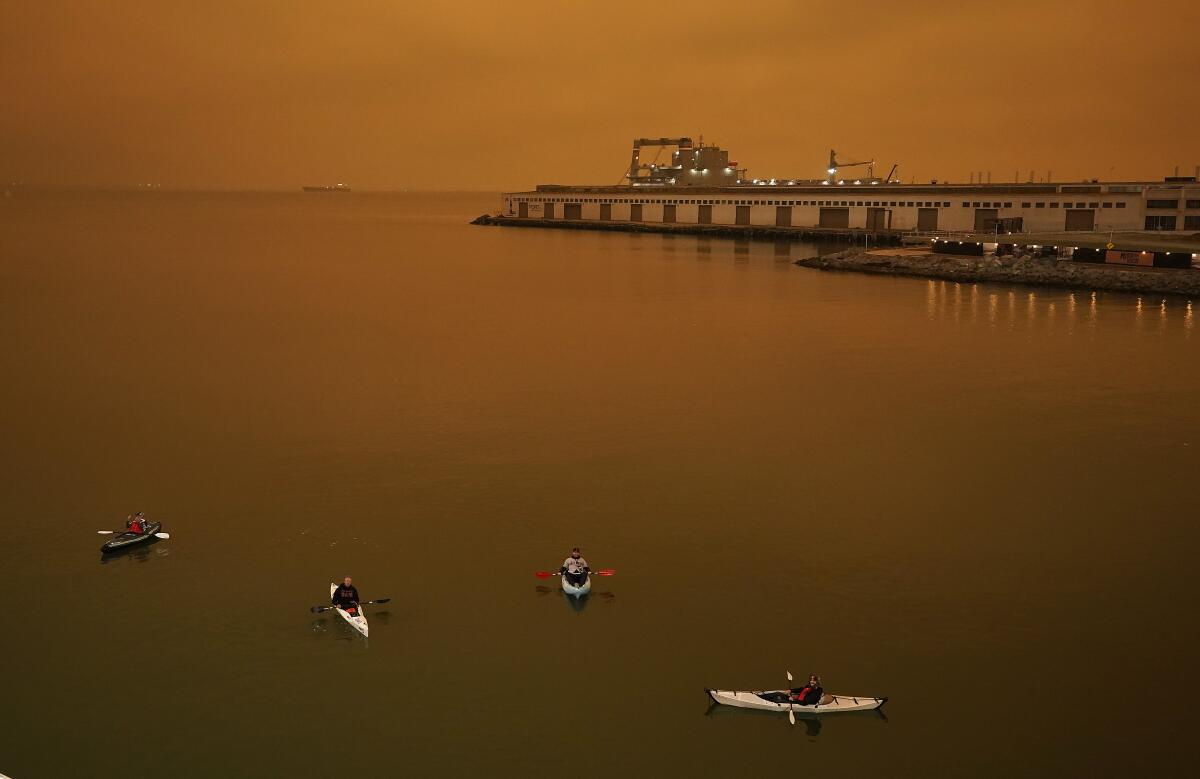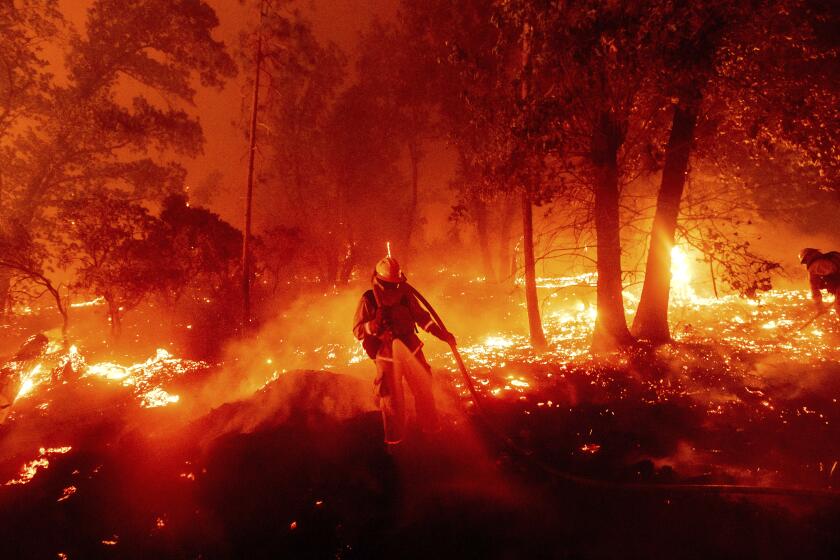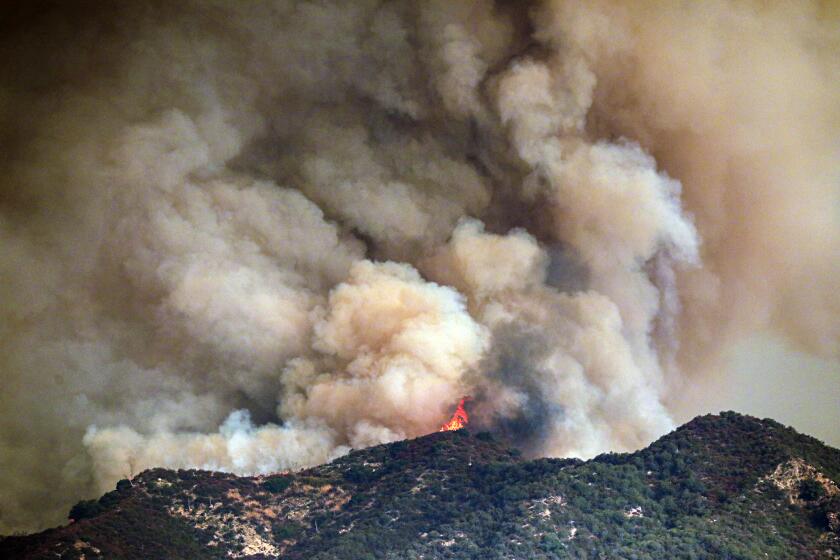Dirty air from wildfires continues to foul parts of the smog-weary Bay Area

- Share via
PALO ALTO, Calif. — Bay Area residents woke to another day of perpetual twilight, with the sun obscured by thick smoke from a historic conflagration of fires throughout California.
But, unlike Wednesday, when a marine layer and high winds in the mid-to-upper reaches of the atmosphere kept the smoke from settling in lower elevations, those winds weakened Thursday morning — and the air quality at ground level deteriorated.
Data from the Bay Area Air Quality Management District showed the worst pollution was in San Francisco and Oakland, and also in some Sonoma County towns, particularly Sebastopol.
The skies around the Bay Area and other parts of Northern California took on an eerie glow as smoke from several fires enveloped the region.
According to the Swiss company IQAir, San Francisco was tied with Dubai for having the world’s worst air quality among major cities Thursday morning — with an air quality index at 10 a.m. of 167, a level considered unhealthy for everybody. In rural areas west of Yosemite National Park, AQI levels topped 400 on Thursday morning.
On a dirt path snaking along the San Francisquito creek in Palo Alto, there were notably few joggers and dog-walkers.
Across the creek, in Menlo Park, Lon LaMance, a 78-year-old resident who walks the neighborhood six or seven times a day, said the air quality was noticeably worse than the day before, “but that’s not saying much.”
“In all my years I have never seen the atmosphere like it was yesterday,” he said. It was “as if we were on Mars.”
Six of the 20 largest wildfires the state has ever seen started in the last few weeks, Cal Fire says.
The National Weather Service’s Drew Peterson said it was difficult to forecast how long the air quality in the Bay Area would remain compromised. Even predicting the weather was hard enough, he said.
“The wildfires are driving the weather,” he said. And until they are contained, the usual patterns of wind, temperature and weather don’t hold.
“Temperatures across the region were 20 to 25 — in some cases 30 — degrees cooler, yesterday, than our forecasts had anticipated,” he said.
Weather models are based on assumptions of incoming energy from the sun. When there is this much smoke in the atmosphere, blocking that sunlight, those models don’t work, he said.
Despite the fire’s growth, evacuation warnings were lifted for Arcadia residents, while six other areas are still being advised to be ready to leave.
Asked if that meant he and his colleagues could take a break for a few days, he seemed surprised, and said “no,” noting he and his colleagues are watching all of this unfold and trying to help people understand the situation.
“As you can imagine, we’re on the phone a lot — trying to help explain what is happening,” he said.
He said the air at lower elevations had taken on a smoggier element Thursday, as a result of the wind changes — explaining that the word smog is a contraction of smoke and fog.
“Although in Los Angeles smog usually refers more to the mixing of ozone pollution and fog, what we have here today is a combination of true smoke and the marine layer, or fog,” he said.
“I know the orange skies, yesterday, were scary to see,” said Erin DeMerritt, Bay Area Air Quality Management District spokeswoman. “But the conditions kept that bad air aloft.”
Record heat. Raging fires. What are the solutions?
Get Boiling Point, our newsletter about climate change, the environment and building a more sustainable California.
You may occasionally receive promotional content from the Los Angeles Times.
The situation is actually scarier today, she said, because that smoke has settled, and the air is now considered unhealthy throughout much of the region. She said the reason the skies are gray today, and not orange, is because of the mixing of water vapor with the smoke.
“We expect the conditions to remain through at least tomorrow,” she said. “But it’s all dependent on fire containment.”
Pollution in the Bay Area is partly from local fires that blew up and then were knocked back in the Santa Cruz Mountains and the North Bay. But it also includes particulate pollution blown south on Wednesday from fires as far away as Washington state, according to satellite imagery.
For Elinor Gates, an astronomer at the University of California’s Lick Observatory, on Mt. Hamilton, the air felt as smoky Thursday morning as it did Wednesday, “but not nearly so orange/yellow as yesterday,” she said in an email. “Still can’t see the sun, but more like a completely overcast day than the eerie colors of yesterday.”
More to Read
Sign up for Essential California
The most important California stories and recommendations in your inbox every morning.
You may occasionally receive promotional content from the Los Angeles Times.

















